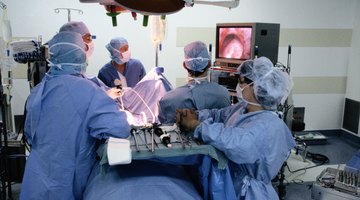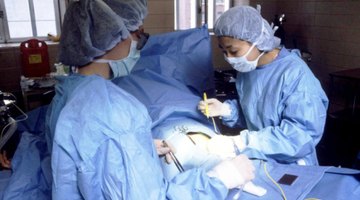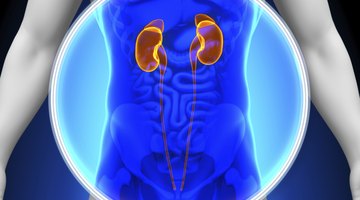What Are Symptoms of Dust Pneumonia?
Dust pneumonia is an acute type of respiratory distress that can develop into an infection of the lungs. Typically, it is brought on by excessive exposure to dust and dirt inhalation. Most dust and dirt if inhaled in trace or small amounts will safely pass through the lungs with the assistance of the cilia (tiny hairs in the lungs). With a case of dust pneumonia, the dust travels deep into the alveoli preventing the cilia from moving the dirt through—leading to infection, possible respiratory failure and lung damage. Dust pneumonia is caused from over exposure to airborne dust and dirt particles such as a dust storm or dirt turned up by wind.
Cough
One of the initial symptoms of dust pneumonia is coughing. The cough is the body’s natural response to forcing dirt and debris out of the airways and lungs. Beginning as a dry cough, the lungs work against the debris and uses mucus to attempt to force the dirt and particles out. Once dust and dirt enter the lungs, cilia are unable to move freely and combat the particles out of the body allowing the dirt to take over. Debris then rests inside of the lungs and can even cause the cilia to stop moving. This is when infection is likely to set in. Initially, heavy mucus is coughed up along with the dirt giving it a mud-like appearance. Mucus may also begin to turn yellow and green.
Wheezing

Do Infants Get Ear Infections With Teething?
Learn More
Wheezing is another symptom of dust pneumonia. Wheezing is a type of whistling sound that is heard each time someone takes a deep breath. As a symptom of dust pneumonia, wheezing is caused by the buildup of fluid and debris in the lungs. The wheezing is caused from the air passages inside the lungs constricting—making it more difficult to breathe.
Chest Pain
Chest pain is a typical symptom of dust pneumonia. The chest pain can be caused from the additional debris inside of the air passageways or lungs or it can be caused from constriction or both. Chest pain is a very serious sign of advanced pneumonia and should be an indication to seek medical help immediately. Pain can occur when coughing, breathing deeply or when the body is lying down.
Fever

Information on Cold Symptoms and Rattling in a Newborn's Chest
Learn More
Fever is a sign of advanced lung pneumonia. Any fever over 100 degrees Fahrenheit should be evaluated by a physician—especially if other symptoms such as cough, colored mucus and wheezing are present. The fever is one of the first indications that there is an infection present. Fever is the body’s natural way of fighting off an infection or other foreign substances in the body.
Septic Shock
Septic shock is an advanced symptom and condition caused by dust pneumonia. Septic shock is caused when an infection spreads into the blood stream or other parts of the body—causing the body and its organs to eventually shut down. This is a life-threatening condition that develops once an advanced infection in the lungs has spread to other parts of the body. The patient must be hospitalized and placed on a high dosage of antibiotics and fluids to assist with recovery.











